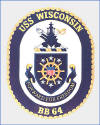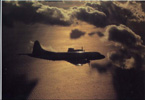ChezDaJez
Posts: 3436
Joined: 11/12/2004
From: Chehalis, WA
Status: offline

|
quote:
However, that does not mean they can not be picked up by passive measures. You have come close to describing the new technology: new advances allow analysis of "noise shadowing". You can sort of experience this if you are walking through a darkened house, and get close to something large (and quiet). Suddenly you know something is there because the background noises go away in the direction of the silent object. Computer analysis can use ambient ocean noise to act as an omnipresent "sonar".
I didn't mean to imply that the Ohios create black holes of sound in the ocean. They can be quieter than the ambient noise sometimes but it depends upon the oceanographic conditions and their operating mode. Its more like me trying to hear my TV over my daughter's stereo. When she goes to bed, the ambient noise levels drop so I can hear my TV better.
My experience with acoustic computer analysis is that they aren't worth squat. Today's computers aren't capable of the kind of AI required to extract submarine sound signatures from ambient noise. Its kind of like asking a computer to analyze a Van Gogh painting and come up with a realistic interpretation. It might surprise you to know that the UYS-1 acoustic system has less than 1 meg of memory to store all the programs required and it doesn't use a harddrive, it uses VHS size casettes to load programs. The P-3C central computer, the CP-901, had 64K (thats kilobytes) of memory (My 1983 APPLE IIE had more) until less than 10 years ago and used 1/4" magnetic tape to load and save computer data. They've replaced the CP-901 now but I'm not sure what specs the new system has but I'ld bet you a dollar that a generic desktop comptuer has more memory.
Computers can alert you to the presence of high-interest frequencys that you have told it to look for but the operator must still analyze the characterisitics of the signal. Are they it broad and diffused, is it discrete, is it stable or unstable, does it show short term or long term transient effects, do they harmonically relate, is there a gear reduction relationship? Thats just scratching the surface of acoustic analysis. Some of the characterisitcs are temporary due to differing oceanographic profiles that can change in an instant. For example, a sub going from deep water to a continental shelf or entering a current like the Gulf stream can play havoc on signal characterisitics. Computers as yet, can't follow that.
The Navy has been working on other detection systems but they haven't really been able to find one that contains all the answers yet. Blue-green lasers did hold some promise too but there are too many limitations for practical employment. The Soviets were actually pretty far ahead of us in this endeavor but haven't been able to resolve atmospheric problems either. Acoustic systems have pretty much reached their zenith against targets whose sound properties are at or below the ambient noise. That's why the Navy has been testing LFA systems the last few years. The P-3's are also testing a similar system called Explosive Echo Ranging (EER). These are basically nothing more than superloud active sonar systems. These systems light everything in the ocean up for long distances so I doubt that they will be the best answer, especially given the environmental concerns over whales and other oceanic mammals.
Chez
_____________________________
Ret Navy AWCS (1972-1998)
VP-5, Jacksonville, Fl 1973-78
ASW Ops Center, Rota, Spain 1978-81
VP-40, Mt View, Ca 1981-87
Patrol Wing 10, Mt View, CA 1987-90
ASW Ops Center, Adak, Ak 1990-92
NRD Seattle 1992-96
VP-46, Whidbey Isl, Wa 1996-98
|
 Printable Version
Printable Version
















 Well, the CIWS don't really have a long-range detection radar - they are designed for close in stuff. And presumably you know where the shells from a BB are coming from so you can have your guns pointed in the right general directions.
Well, the CIWS don't really have a long-range detection radar - they are designed for close in stuff. And presumably you know where the shells from a BB are coming from so you can have your guns pointed in the right general directions. 





 New Messages
New Messages No New Messages
No New Messages Hot Topic w/ New Messages
Hot Topic w/ New Messages Hot Topic w/o New Messages
Hot Topic w/o New Messages Locked w/ New Messages
Locked w/ New Messages Locked w/o New Messages
Locked w/o New Messages Post New Thread
Post New Thread